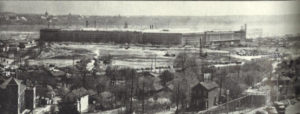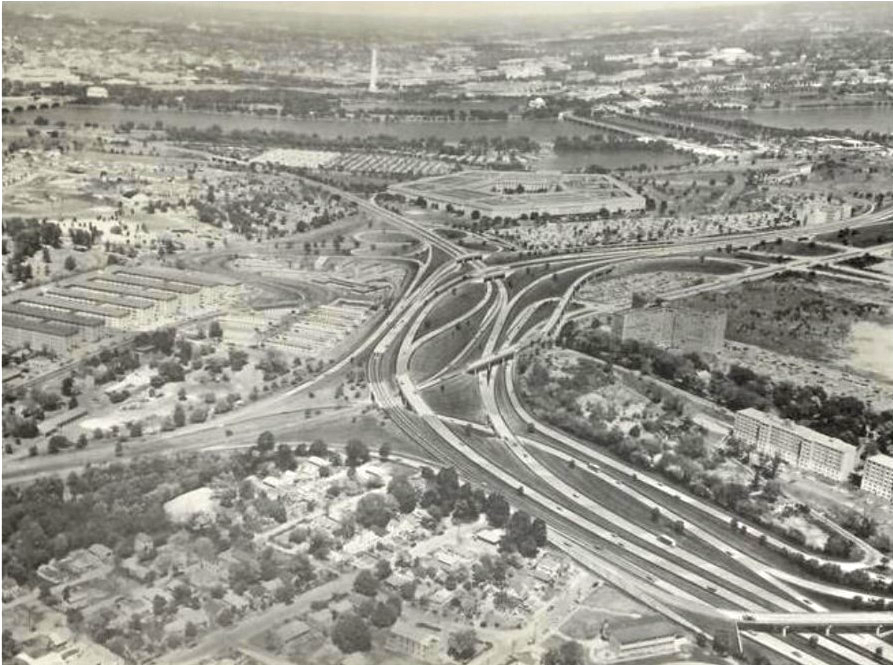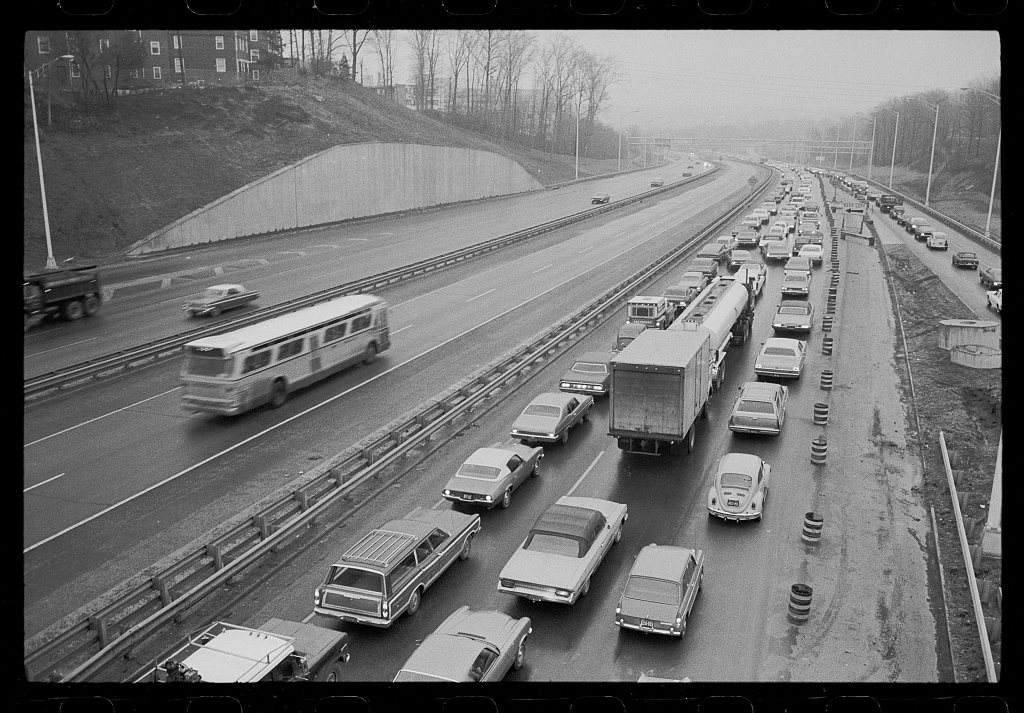In 1946, three months after the U.S. Supreme Court banned segregation on interstate public transport (Morgan v. Virginia), a Black commuter, Lottie Taylor, sat in the front of a bus traveling from Washington, D.C. into Northern Virginia. Taylor was forcibly removed by Fairfax Police and charged with disorderly conduct, but she won her case in the Virginia Supreme Court of Appeals (Taylor v. Virginia).
Transportation infrastructure was itself a tool of exclusion, whether it was making it a crime to commute to work in the wrong section of a bus or decimating Black communities to construct highways. The construction of Shirley Memorial Highway cut a path through Green Valley in South Arlington, and Lincolnia, near what became Landmark Mall. Black communities were displaced in the 1920s when Lee Highway was routed through the Fall’s Church enclave of Tinner Hill. The growth of largely white suburbs in the outlying areas of Northern Virginia led to the expansion of interstate highways throughout Northern Virginia. Planners routed these highways through Black neighborhoods, creating corridors of low-priced property, especially along Shirley Memorial Highway and Interstate 95, which were zoned for high-density housing.
Fast Forward
People need a competent transportation infrastructure to reach jobs, physicians, child care, and other essential resources. In a previous report by the Center on Society and Health, Uneven Opportunities, we found that although the percentage of residents commuting to work by motor vehicle ranged from 28% to 97% across Northern Virginia, more than 20% of people in 17 census tracts lacked access to a motor vehicle. Placing bus stops in proximity to disadvantaged areas, modifying transit routes to improve access to employment opportunities and schools, and curbing fares for Metrorail and local connector bus services to make public transit more affordable for low-income families could all help to ease the transportation burden on Northern Virginia’s Black families.
Stories
Dig deeper into the topics by exploring the stories of the past that have shaped the present.

Eminent Domain and the Displacement of Black Communities
Eminent Domain and the Displacement of Black Communities More than a century ago, before there was today’s Prince William Forest Park, there was a community

The Quest for Education
On cold winter days, Minnie Hughes, a school teacher at the Fairfax Colored School, would heatup a kettle and pour the water onto the hands








